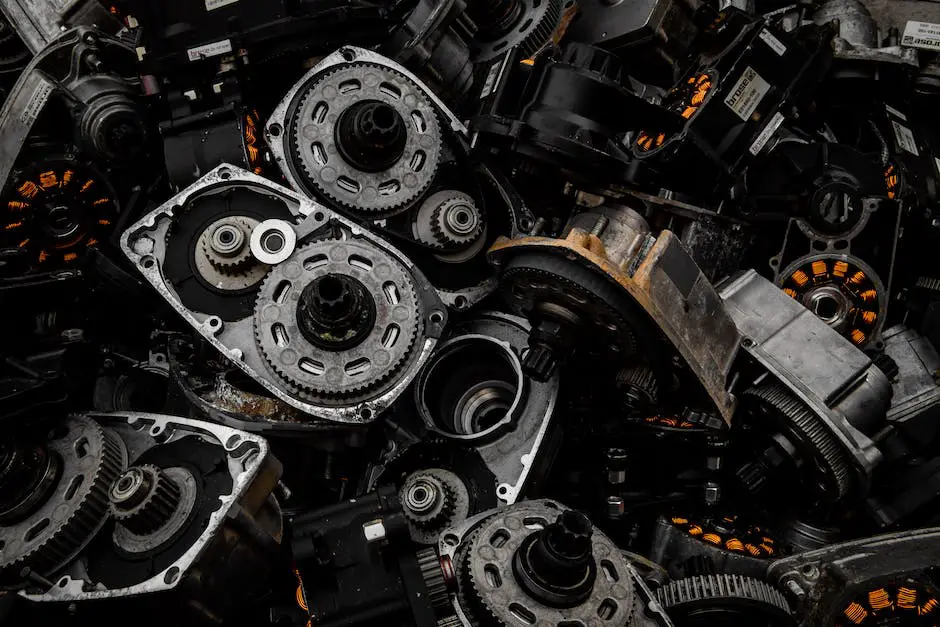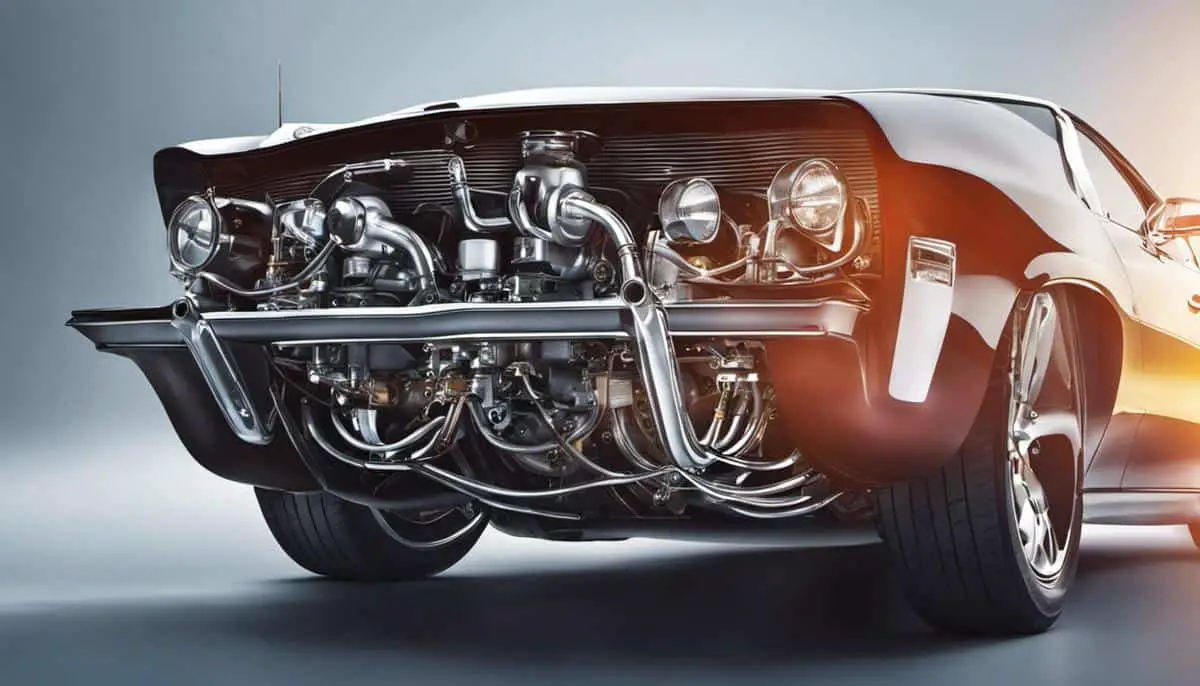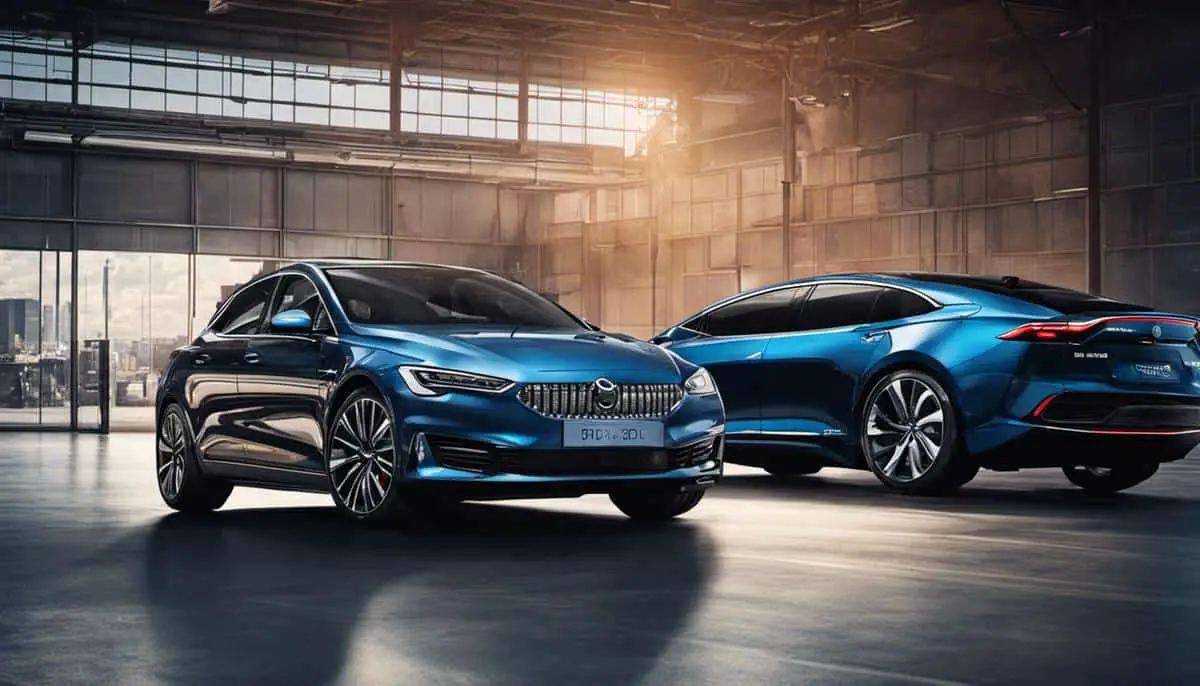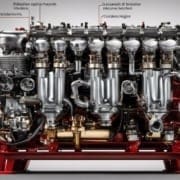Electric vs Combustion Engines: The Advantages of Traditional Power
Electric vs Combustion Engines: The Advantages of Traditional Power
As innovation propels us into a future where electric engines are rapidly becoming more prevalent, it’s important to take a step back and thoroughly examine the significant benefits that combustion engines still hold. This debate centers not only on technological preferences but also hinges on pragmatic advantages, economic considerations, and even ecological impacts. As we peel back the layers of the discussion, it becomes evident that combustion engines, often overlooked because of their traditional tag, offer a potent combination of power output, velocity control, extended range, and other practical benefits. No less important are the economic aspects, such as the lower initial purchase cost or ease of maintenance that these engines offer, making them accessible and attractive to a broad swath of consumers. Additionally, the environmental narrative surrounding combustion engines is much more nuanced than commonly portrayed, introducing facets worth exploring such as controversies over the production and disposal of electric vehicle batteries, and the advancements being made in cleaner combustion technologies.
Understanding Combustion Engines
Understanding Combustion Engines
To comprehend why combustion engines might be perceived as superior to electric ones, we first need to understand their operational principles, structure, and the dynamics that make them powerful. Comprising of primarily the cylinder block and head, which house the crucial internal components, a combustion engine’s design hinges on the four-stroke cycle concept: intake, compression, combustion, and exhaust.
During the intake step, the piston moves down the cylinder and the intake valve opens to let in a mixture of air and fuel. In the compression stage, both valves close as the piston rises, compressing the mixture. Then, during the combustion or power stage, the mixture is ignited by the spark plug, pushing the piston down and providing power. Ultimately, in the exhaust stroke, the piston moves back up and expels the waste gases—a cycle optimized in professional racing cars to achieve unmatched speed.
The Strength of Combustion Engines
One key advantage of combustion engines over their electric counterparts is their extensive range and quick refueling. Cars driven by combustion engines can run hundreds of miles on a tank of fuel, and refueling them takes just a few minutes at a filling station. This advantage becomes even more pronounced in areas or countries where electric charging infrastructure may not be as developed or widespread.
Moreover, combustion engines typically have more notable horsepower and torque, granting them superior performance in demanding situations such as steep inclines, heavy towing, and high-speed pursuits. Because of this, they remain a favored choice for large trucks, performance vehicles, and other applications where power output is extensively needed.
The flexibility of fuel options is another strength of the combustion engine. They can run on various types of fuels like petrol, diesel, biofuels, and so forth, making them versatile and fitting for different applications and climates.
The Incredible Versatility of Combustion Engines: Petrol vs. Diesel
When it comes to versatility, petrol and diesel engines — the predominant types of combustion engines — take the lead. With their high rotational speed, petrol engines are perfect for smaller, speedier vehicles. Conversely, diesel engines, known for their superb torque and fuel economy, serve as the ideal choice for heavy-duty vehicles and lengthy trips.
From a global economic standpoint, the extensive network of support and maintenance for combustion engines is hard to ignore. After-sale services for such engines are more readily available and cost-effective, thanks to millions of adept mechanics worldwide.
The automotive revolution thrived due to the combustion engines, creating jobs and supporting numerous industries, from oil extraction to vehicle maintenance. Although this economic aspect doesn’t directly contrast with electric engines, it explains why combustion engines are still a valued part of our transportation system.
Despite their environmental implications, combustion engines have evolved through the development of cleaner fuels and advanced emission controls. As we transition towards electric technology, it is crucial to consider the benefits of combustion engines, especially given the present limitations of infrastructure and technology.

Performance Characteristics
The Notable Power and Efficiency of Internal Combustion Engines (ICE)
In the world of machinery, combustion engines are celebrated for their impressive power output. This measure of work performed over a given time is a substantial advantage of combustion engines over electric motors. Due to the enormous power production in a constrained area, combustion engines have found their way into several performance-driven applications such as high-performance cars, racing events, and speedy boats. Furthermore, these engines are engineered to operate at peak efficiency when they’re consistently run at high speeds, providing steadier power than what’s typically supplied by their electric competitors.
Unparalleled Velocity Control
The internal workings of a combustion engine also give these powerhouses a desirable attribute called velocity control. Velocity control is important in any vehicle as it directly affects its speed and acceleration. Combustion engines utilize a series of gears to vary vehicle speed, providing a precise control that’s unmatchable by electric engines’ design. Pair this velocity control advantage with the high RPM (Revolutions Per Minute) that combustion engines achieve, and you’re left with a power delivery method that excels in speed variation and control, aspects that electric engines currently struggle to match.
Superior Acceleration and Speed Increment
Acceleration is a critical aspect of a vehicle, particularly since it determines how quickly a vehicle can get to its top speed. Combustion engines perform better in this regard compared to electric motors. Combustion engines deliver high torque at high RPM. This provides improved acceleration and better top-end speed, making combustion engines a more suitable choice for high-performance scenarios.
Unrivalled Torque Capabilities
One major advantage of combustion engines is their torque capabilities, especially when dealing with heavy loads or difficult terrains. Torque is the rotational force a vehicle needs to get moving, and it directly influences a vehicle’s pulling power. While electric motors provide ample torque from a standstill, they don’t sustain this torque over a wide range of speeds like combustion engines. Internal combustion engines, particularly diesel engines, provide high, sustainable torque, making them more suitable for activities like towing or hauling.
Continuous Power Delivery: A Stellar Advantage
Perhaps one of the most impressive advantages of combustion engines over electric motors is their continuous power delivery. After filling up the vehicle’s gas tank, a combustion engine can deliver power continuously until the fuel is exhausted. This ability for constant power delivery, even over long distances, is an essential feature for many forms of transportation, particularly commercial and industrial vehicles.
The Superiority of Combustion Engines
In assessing performance indicators, it’s evident why combustion engines generally outpace electric motors. Their advantageous properties, such as robust power output, precision velocity control, swift acceleration, and high torque capabilities, are yet to be equaled by electric engines. The consistent and dependable power delivery they offer is crucial across various applications. Even though electric powertrain systems’ technological advancements could shrink these differences in the future, combustion engines currently retain their solid dominance in these performance areas.

Practical Benefits and Flexibility
Greater travel distance
Another considerable edge that combustion engines have over electric ones lies in their driving range. Despite technological progress, electric vehicles (EVs) still lag behind their conventional internal combustion engine (ICE) counterparts when it comes to distance. Top-tier electric vehicles may achieve 250-375 miles with a full charge, but a majority of them hover within 150-250 miles. In contrast, combustion engine vehicles can easily surpass 400 miles on a full tank, making them a more fitting choice for long drives and areas with infrequent charging stations.
Fast Refueling
Conventional vehicles with combustion engines also have the upper hand for refueling speed. Filling up a gasoline or diesel vehicle’s tank takes a few minutes at most. In contrast, electric cars take much longer to charge. Home charging options can take up to 12 hours for a full charge, and even the fastest public charging stations take at least 20-30 minutes to deliver an 80% charge. This disparity in refueling times can be a significant drawback for electric vehicles, especially for drivers on a tight schedule or on long trips.
High-Energy Density
In terms of energy density, fossil fuels used by combustion engines – like petrol and diesel – surpass the batteries used in electric cars. These fuels pack a significant amount of energy into a relatively small volume and weight, which means that vehicles powered by combustion engines can store more energy onboard and hence travel further than electric cars. This inherent advantage of fossil fuels is a major reason for the range discrepancy between electric and combustion engine cars.
Established Infrastructure
There’s an already established comprehensive infrastructure for refueling combustion engine vehicles. From rural areas to dense urban cores, gasoline stations are ubiquitous and within easy reach in most parts of the world. This means drivers of conventional vehicles rarely have to worry about running out of fuel. Meanwhile, the infrastructure for charging electric vehicles is still under development. Public charging stations, while steadily increasing, are nowhere near as prevalent as gas stations. This scarcity can cause so-called “range anxiety” for EV drivers who fear running out of charge before reaching a charging station.
Flexibility for Different Vehicle Types
Combustion engines also provide more flexibility when it comes to different types of vehicles. Electric powertrains are still evolving and may not match the performance and capabilities of combustion engines in certain vehicle classes. For example, pick-up trucks, large SUVs, and heavy-duty vehicles powered by combustion engines can tow heavy loads and navigate tough terrains. Electric versions of these vehicles are still in early development and may not offer the same capabilities.
In wrapping up, it’s easy to see the appeal of electric vehicles, which are championed for their minimal emissions and cost-efficient operation. Nonetheless, traditional combustion engines still possess significant advantages in terms of driving range, refueling speed, and versatility for diversified vehicle use. These advantages are further supported by an extensive and well-established refueling infrastructure.

Photo by johnschno on Unsplash
Economic Factors
More Affordability Upfront
The economic comparison between combustion engine cars and their electric counterparts reveals a key advantage for the former: a significantly lower upfront cost. Electric vehicles (EVs) generally cost more than combustion engine cars when fresh off the lot, largely due to the higher price tag of the batteries that power them. Despite a decrease in battery cost over time, this component remains pricey. In contrast, combustion-engine vehicles leverage well-established technologies that have reaped the benefits of mass production – translating to lower manufacturing costs and consequently, a more wallet-friendly price for the consumer.
Better Resale Value
Combustion engine vehicles generally have a better resale value than electric vehicles for a few reasons. The technology in combustion engine vehicles is more familiar and trusted, meaning that potential buyers feel more confident in purchasing a used combustion engine car than an electric one. Another factor is the potential lifespan of the car’s power source; combustion engines typically have a longer lifespan than electric batteries. Finally, the widespread availability of gas stations compared to charging stations makes combustion engine vehicles more convenient for many buyers, aiding their resale value.
Ease of Maintenance and Repair
Combustion engine vehicles also win when it comes to ease of maintenance and repair. Many typical repairs on combustion engines, like oil changes or replacing spark plugs, can be performed by the vehicle owner or any mechanic. The infrastructure for repairing and maintaining combustion vehicles is well-established, with auto repair shops in every city and town. On the contrary, electric vehicle repairs often require specialist knowledge and often need to be undertaken by qualified professionals. This can make maintenance of an electric vehicle more time-consuming and expensive.
Fuel Cost and Availability
Though this doesn’t directly fit into the initial purchase price or maintenance cost, it’s worth mentioning that for many drivers, fuel availability and cost are significant economic factors. Gasoline, the fuel for combustion engines, is readily accessible at a huge number of gas stations across the country, whereas charging stations for electric vehicles are still comparatively rare, especially in rural areas. This can cause anxiety for EV drivers about whether they’ll be able to find a charging station before they run out of juice. Combustion engine users almost never have to worry about finding a gas station.
Moreover, the fuel cost for combustion engines may sometimes be cheaper depending on local electricity and gas prices. Although electric vehicles are generally cheaper to ‘refuel’, in places where electricity is expensive and gasoline is cheap, a combustion engine vehicle could be more economical.
In conclusion
When evaluating different types of vehicle engines, it is essential to consider several factors. These include initial purchase price, resale value, maintenance and repairs, availability, and fuel costs. After an analysis of these elements, it is clear that despite recent technological advancements in the electric engine industry, combustion engine vehicles still maintain some economic advantages.

Environmental Impact
A Comprehensive Overview of the Environmental Impact of Combustion Engines
Despite the common assumption that combustion engines foster significant harm to the environment due to their emissions, a more in-depth exploration reveals a more intricate situation. This prevalent misunderstanding often overlooks the immense progress the automotive industry has made towards developing cleaner, more fuel-efficient combustion engines.
Primarily, there has been a vast evolution in combustion engines since their first introduction. The combustion engines manufactured with today’s modern technology are significantly cleaner than their predecessors. Groundbreaking improvements in catalytic converters, fuel injection systems, and computer-controlled ignition systems have considerably curtailed emissions of detrimental pollutants. Some combustion engines have adapted even further by utilizing biofuels, offering another step towards environmental sustainability.
The Energy Production Problem in Electric Vehicles
Electric vehicles (EVs), on the other hand, are often viewed as being clean. However, the process of creating the electricity that powers these vehicles often involves burning fossil fuels. According to the U.S. Energy Information Administration, in 2020, 60% of the electricity generated came from fossil fuels, namely natural gas and coal. This means that a significant portion of the energy used to charge electric cars results in greenhouse gas emissions, somewhat diluting the clean image of EVs.
The Controversy of Battery Production
The production of EV batteries also has a considerable environmental cost. EV batteries consume a large amount of energy during production, create a significant volume of carbon dioxide emissions, and require lithium, cobalt, and nickel mining. These mining processes often have negative environmental impacts, including habitat destruction, soil and water contamination, and carbon emissions. Additionally, the secure and ethical sourcing of these materials often presents social and geopolitical challenges.
Moreover, the recycling and disposal of EV batteries prove another challenge. While these batteries have a lifespan of 10 to 15 years, what happens after that remains a significant concern. Safe and environmentally friendly dismantling and recycling practices aren’t yet widespread. The minerals that power these batteries can’t be reused easily, and recycling is an energy-intensive process, creating even more emissions.
The Future of Combustion Engines
Despite the criticisms, combustion engines remain integral to the automotive industry. Cleaner combustion technologies are in the pipeline, including direct fuel injection, cylinder deactivation, turbocharging, and advanced transmission designs. Biofuels, such as ethanol and biodiesel, have shown vast potential in reducing carbon emissions when used in combustion engines.
Even if the current trend favors the development of electric vehicles, the combustion engine isn’t likely to disappear anytime soon. Their wide-ranging adaptability, established infrastructure, technological advances, and overall practicality ensure their place on our roads.
Conclusion
What becomes apparent upon reviewing these points is that no form of propulsion – be it combustion or electric – is completely without environmental impact. Each has its own set of challenges and advantages. Despite the popular narrative, combustion engines, especially those utilizing cleaner and more fuel-efficient technology, can actually be in some ways more environmentally friendly and economically feasible than electric vehicles. Each technology has a place in different uses and contexts, with the ideal solution likely lying in a blend of both propulsion technologies.

While it can’t be denied that the march of progress is leading us towards a future where renewable energy and electric cars take center stage, it is equally clear that combustion engines continue to hold their own, in many respects outstripping their electric counterparts. From performance characteristics that are hard to replicate, to practical benefits that are woven into the very fabric of our day-to-day lives, the combustion engine’s advantages are substantial. Economic accessibility also remains an indelible strength of combustion engines, underscoring the fact that they are not just artifacts of the past, but vital instruments of the present. Furthermore, it is important to have a balanced discussion about the environment, one that acknowledges the progress being made in clean combustion technologies and openly addresses the often-overlooked ecological challenges posed by the production and disposal of electric vehicles. Taking everything into account, the combustion engine remains a formidable player in the vehicle power source arena, demonstrating that enduring value and adaptability can often outpace the glamorous allure of novelty.





I simply could not go away your web site prior to suggesting that I really enjoyed the standard info a person supply on your guests? Is going to be back incessantly to investigate cross-check new posts.
I appreciate you sharing this blog post. Thanks Again. Cool.
Hi there, I wish for to subscribe for this blog to take most
up-to-date updates, thus where can i do it please assist.
Hi there! You can simply press the subscribe button on the sidebar “newsletter”. See you :-)